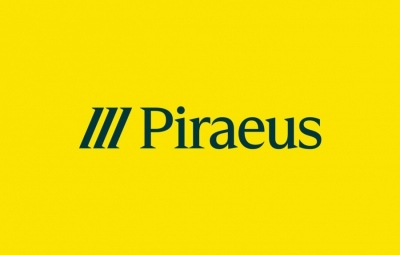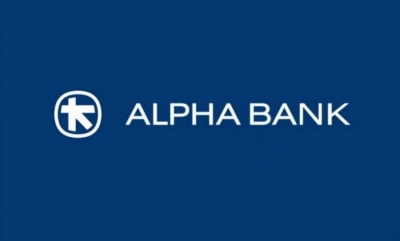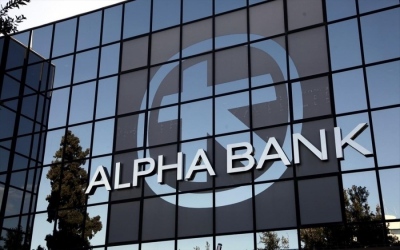
To άρθρο 5 της προληπτικής χρηματοδοτικής συνδρομής αναφέρει ότι η εποπτεία της Ελλάδος θα είναι ενισχυμένη....
Ένα κρίσιμο ερώτημα εγείρεται που χρήζει προσοχής γιατί με βάση την διαδικασία που θα ακολουθηθεί θα καθοριστεί και το ειδικό βάρος του νέου μνημονίου που έρχεται.
Η κυβέρνηση για λόγους επικοινωνιακής τακτικής προφανώς προβάλλει το επιχείρημα ότι η Ελλάδα εγκαταλείπει το μνημόνιο, δεν θα κάνει χρήση των τελευταίων 10 δισεκ. από το ΔΝΤ άρα το ΔΝΤ θα αποχωρήσει και θα συνάψει μια προαιρετική πιστωτική γραμμή που θα λειτουργεί ως δικλείδα ασφαλείας.
Όσο υπάρχουν οι δανειακές συμβάσεις η Ελλάδα υποχρεωτικά θα παραμείνει στο μνημόνιο.
Ωστόσο αναλύοντας την επιχειρηματολογία της κυβέρνησης ποια είναι η απάντηση στο ερώτημα τα 11 δισ. του ΤΧΣ θα χρησιμοποιηθούν ως απόθεμα κεφαλαίου της πιστωτικής γραμμής ή θα χορηγηθεί νέο κεφάλαιο;
Η κυβέρνηση θέλει να πάρει τα 11 δισεκ. και να τα χρησιμοποιήσει ως απόθεμα κεφαλαίου σε αυτό τον νέο προληπτικό μηχανισμό ή κατά το ορθότερο προληπτική χρηματοδοτική συνδρομή PCCL.
Με δεδομένο ότι θα χρειαστούν 25 με 27,5 δισεκ. για την κάλυψη του χρηματοδοτικού κενού του 2015 με 2016 και χρησιμοποιώντας τα 11 δισεκ. του ΤΧΣ η κυβέρνηση ποντάρει ότι έτσι θα καλύψει το χρηματοδοτικό κενό χωρίς νέο μνημόνιο.
Ωστόσο ο EFSF τώρα ESM δηλαδή ο Μόνιμος Μηχανισμός Στήριξης δια της διοικήσεως του έχει αναφέρει ότι τα 11 δισεκ. του ΤΧΣ αν επιστραφούν θα πρέπει να μειώσουν το χρέος.
Αν η κυβέρνηση καταφέρει να μην χρησιμοποιήσει τα 10 δισεκ του ΔΝΤ και χρησιμοποιήσει τα 11 δισεκ του ΤΧΣ ως απόθεμα κεφαλαίου στην προληπτική χρηματοδοτική συνδρομή θα αποκτήσει ένα πλεονέκτημα στην διαδικασία καθώς έτσι θα έχει αξιοποιήσει 21 δισεκ. τα 10 δισεκ του ΔΝΤ που ίσως να μην χρησιμοποιήσει και τα 11 δισεκ. του ΤΧΣ που θα διακρατήσει στο πλαίσιο της προληπτικής χρηματοδοτικής συνδρομής.
Η Ελλάδα θα λάβει στην επόμενη αξιολόγηση τα 7,1 δισεκ. ευρώ της δόσης που προέρχονται 3,5 δισεκ. από το ΔΝΤ, 1,8 δισεκ. από την ΕΕ και 1,8 δισεκ. επιστροφές κερδών από ελληνικά ομόλογα
Ο δανεισμός από την ΕΕ τελειώνει και απομένουν άλλα 10 δισεκ. από το ΔΝΤ.
Το ερώτημα είναι αν η Ελλάδα πάρει τα 10 δισεκ. του ΔΝΤ ή επιλέξει νέο πλαίσιο χρηματοδοτικής στήριξης.
Βραχυχρόνια η Ελλάδα τέθηκε εκτός αγορών και αποδείχθηκε πόσο εύκολα μπορεί να χαθεί η εμπιστοσύνη των αγορών.
Λόγω της δραματικής τροπής που έλαβε χώρα στις αγορές, η Ελλάδα κακώς κάκιστα ανακάλεσε το σχέδιο αποχώρησης από την Τρόικα και μαζί κατέρρευσε και το σχέδιο εξόδου στις αγορές με 7ετές ομόλογο.
Σύμφωνα με πληροφορίες η κυβέρνηση ήταν έτοιμη να εκδώσει 7ετή κοινοπρακτική έκδοση με επιτόκιο περίπου 5% αλλά προφανώς μετά την εκτόξευση των αποδόσεων των ομολόγων, το σχέδιο αυτό κατέρρευσε.
Αντί για έξοδο από το μνημόνιο η Ελλάδα υπέστη ήττα από τις αγορές και υπέστη ήττα από την Τρόικα.
Αντί λοιπόν για έξοδο από το μνημόνιο η Ελλάδα πραγματοποίησε στροφή 180 μοιρών και επιλέγει open credit line δηλαδή μια προληπτική χρηματοδοτική συνδρομή PCCL που σημαίνει περισσότερο μνημόνιο και περισσότερη τρόικα.
Ο στόχος της προληπτικής χρηματοπιστωτικής συνδρομής είναι να στηρίξει υγιείς πολιτικές και την πρόληψη καταστάσεων κρίσης, επιτρέποντας σε χώρες να εξασφαλίσουν την δυνατότητα να έχουν πρόσβαση σε βοήθεια του ESM του Μόνιμου Μηχανσιμού Στήριξης πριν αντιμετωπίσουν σημαντικές δυσκολίες στην άντληση κεφαλαίων από τις κεφαλαιαγορές.
Η προληπτική χρηματοδοτική βοήθεια αποσκοπεί στο να βοηθήσει τις χώρες μέλη του ΕΜΣ των οποίων οι οικονομικές συνθήκες εξακολουθούν να είναι υγιείς για να διατηρήσουν την συνεχή πρόσβαση σε χρηματοδότηση από την αγορά, εξασφαλίζοντας ταυτόχρονα ένα επαρκές δίχτυ ασφαλείας.
Τύποι προληπτικής χρηματοδοτικής συνδρομής PLCC
1. Η οικονομική βοήθεια μπορεί να παρέχεται μέσω ενός Πιστωτικού ορίου (με PLCC) ή μέσω μιας ενισχυμένης πιστωτικής γραμμής χορηγώντας δάνειο.
Και οι δύο τύποι της πιστωτικής γραμμής πρέπει να έχουν μια αρχική περίοδο διαθεσιμότητας ενός έτους.
2. πρόσβαση σε ένα με PLCC θα πρέπει να βασίζονται σε προκαθορισμένα κριτήρια και περιορίζεται σε μέλη του ΕSM, όπου η οικονομική και δημοσιονομική κατάσταση εξακολουθεί να είναι κατά βάση υγιής.
Η συνολική εκτίμηση θα πρέπει να γίνεται σχετικά με το αν ο δυνητικός δικαιούχος μέλος του ΕSM πληροί τις προϋποθέσεις για ένα με PLCC, χρησιμοποιώντας ως βάση τα ακόλουθα κριτήρια:
(α) Την τήρηση των δεσμεύσεων στο πλαίσιο του συμφώνου σταθερότητας και ανάπτυξης.
Ένα μέλος του ESM στο πλαίσιο της διαδικασίας υπερβολικού ελλείμματος μπορεί να εξακολουθεί να έχει πρόσβαση σε ένα με PLCC, με την προϋπόθεση ότι συμμορφώνεται πλήρως με τις αποφάσεις και συστάσεις του Συμβουλίου που αποσκοπούν στη διασφάλιση της ομαλής και επιταχυνόμενης διόρθωση του υπερβολικού της ελλείμματος.
(β) Να είναι βιώσιμο το χρέος της γενικής κυβέρνησης.
(γ) Τήρηση των υποχρεώσεων που απορρέουν από τη διαδικασία υπερβολικών ανισορροπιών.
(δ) Ένα ιστορικό της πρόσβασης στις διεθνείς κεφαλαιαγορές με λογικούς όρους.
(ε) Μια βιώσιμη εξωτερική θέση.
(στ) Επίλυση των τραπεζικών προβλημάτων φερεγγυότητας που θα θα μπορούσε να προκαλέσει συστημική αστάθεια για τη σταθερότητα του τραπεζικού συστήματος της ζώνης του ευρώ.
Άρθρο 5
Ενισχυμένη εποπτεία
1 Όταν σε μια χώρα χορηγείται PLCC, υπόκειται σε ενισχυμένη εποπτεία από την Ευρωπαϊκή Επιτροπή για την περίοδο διαθεσιμότητας της πιστωτικής γραμμής.
Ένα μέλος του ESM υπό ενισχυμένη εποπτεία θα πρέπει, σε συνεννόηση και συνεργασία με την Ευρωπαϊκή Επιτροπή, ενεργώντας σε συνεννόηση με την ΕΚΤ, θα πρέπει....
α) Να αναφέρατε στον ESM με όλες τις απαραίτητες πληροφορίες που απαιτούνται για την εκτέλεση της δανειοδοτικής δραστηριότητας και σχετική διαχείριση του κινδύνου, όπως είναι οι μηνιαίες πληροφορίες σχετικά με την οικονομική κατάσταση της χώρας, ταμειακό υπόλοιπο και άλλες βασικές πληροφορίες.
β) Να παρουσιάζει με την Ευρωπαϊκή Επιτροπή, την ΕΚΤ αναλυτικές πληροφορίες σχετικά με τις εξελίξεις στο χρηματοπιστωτικό του σύστημα.
γ) Να διενεργεί, ασκήσεις προσομοίωσης ακραίων καταστάσεων ή τις αναλύσεις ευαισθησίας που είναι απαραίτητο για να αξιολογήσει την ανθεκτικότητα του χρηματοπιστωτικού τομέα σε διάφορους μακροοικονομικούς και χρηματοπιστωτικούς κραδασμούς, όπως ορίζεται από την Ευρωπαϊκή Επιτροπή και την ΕΚΤ.
ε) Να διεξάγει έκθεση σχετικά με ένα ευρύ έλεγχο των λογαριασμών της γενικής κυβέρνησης.
Στο πλαίσιο αυτό, η Ευρωπαϊκή Eurostat αξιολογεί την ποιότητα των στοιχείων που υποβάλλονται.
στ) Κατά περίπτωση, παρέχονται πρόσθετες πληροφορίες για τους σκοπούς της παρακολούθησης της προόδου προς την κατεύθυνση της διόρθωσης του υπερβολικού ελλείμματος.
Η Ευρωπαϊκή Επιτροπή διενεργεί, σε συνεργασία με την ΕΚΤ όπως απαιτείται και ενδεχομένως το ΔΝΤ τακτικές αποστολές επιθεώρησης στο κράτος υπό επιτήρηση για να επαληθεύσει τις προόδους που έχουν επιτευχθεί όσον αφορά την εφαρμογή των μέτρων που αποφασίστηκαν. Γνωστοποιεί στον ESM, κάθε τρίμηνο, τα πορίσματά της στο Διοικητικό Συμβούλιο και αξιολογεί ιδίως αν χρειάζονται περαιτέρω μέτρα πολιτικής.
Το πλήρες κείμενο στην αγγλική γλώσσα
European Stability Mechanism
Guideline on Precautionary Financial Assistance
Article 1
Aim and scope
The objective of precautionary financial assistance is to support sound policies and prevent crisis situations by allowing ESM Members to secure the possibility to access ESM assistance before they face major difficulties raising funds in the capital markets. Precautionary financial assistance aims at helping ESM Members whose economic conditions are still sound to maintain continuous access to market financing by reinforcing the credibility of their macroeconomic performance while ensuring an adequate safety-net.
Article 2
Types of precautionary financial assistance
1. Precautionary financial assistance may be provided via a Precautionary Conditioned Credit Line (PCCL) or via an Enhanced Conditions Credit Line (ECCL). A PCCL and an ECCL credit line can be drawn via a loan or a primary market purchase. Both types of credit line shall have an initial availability period of one year and shall be renewable twice, each time for six months.
2. Access to a PCCL shall be based on pre-established conditions and limited to ESM Members where the economic and financial situation is still fundamentally sound. A global assessment shall be made on whether a potential beneficiary ESM Member qualifies for a PCCL, using as a basis the following criteria:
(a) Respect of the commitments under the stability and growth pact. An ESM Member under excessive deficit procedure may still access a PCCL, provided it fully abides by the Council decisions and recommendations aimed at ensuring a smooth and accelerated correction of its excessive deficit.
(b) A sustainable general government debt.
(c) Respect of the commitments under the excessive imbalance procedure (EIP). An ESM Member under EIP may still access a PCCL, provided it is established that it remains committed to addressing the imbalances identified by the Council.
(d) A track record of access to international capital markets on reasonable terms.
(e) A sustainable external position.
(f) The absence of bank solvency problems that would pose systemic threats to the stability of the euro area banking system.
2
3. The beneficiary ESM Member shall ensure a continuous respect of the eligibility criteria
after the PCCL is granted, which shall be monitored by the European Commission, in
liaison with the ECB.
4. Access to an ECCL shall be open to ESM Members that do not comply with some of the
eligibility criteria required for accessing a PCCL but whose general economic and
financial situation remains sound. The beneficiary ESM Member shall, after consultation
of the European Commission and of the ECB, adopt corrective measures aimed at
addressing the above-mentioned weaknesses and avoiding any future problems in respect
of access to market financing, while ensuring a continuous respect of the eligibility
criteria which were considered met when the credit line was granted. The monitoring of
the respect of the eligibility criteria and of any corrective measures shall be ensured by the
European Commission, in liaison with the ECB, in line with the provisions foreseen in
Article 5.
Article 3
Procedures for granting precautionary financial assistance
In order to benefit from an ESM credit line, the request by the ESM Member shall follow the
following steps:
1. An ESM Member may address a request for precautionary financial assistance to the
Chairperson of the ESM Board of Governors.1 On receipt of such a request, the
Chairperson of the Board of Governors shall entrust the European Commission, in liaison
with the ECB, with the following tasks:
(a) to assess the existence of a risk to the financial stability of the euro area as a whole
or of its Member States;
(b) to assess whether general government debt is sustainable. Wherever appropriate and
possible, such an assessment shall be conducted together with the IMF;
(c) to assess the actual or potential financing needs of the ESM Member concerned.
2. In addition, the European Commission shall be requested to, in liaison with the ECB,
assess whether the ESM Member concerned meets the conditions for accessing a PCCL or
an ECCL as set out in Article 2(2) and 2(4), respectively.
3. On the basis of the request of the ESM Member and the assessments referred to in
paragraphs 1 and 2, the Managing Director shall prepare a proposal for financial
assistance consistent with the aforementioned assessment and taking into account the
financial situation of the ESM. On this basis, the Board of Governors may decide to grant,
in principle, precautionary financial assistance to the ESM Member concerned in the form
of a PCCL or an ECCL as well as its amount and duration in accordance with Article
13(2) of the ESM Treaty.
4. If a decision is adopted pursuant to paragraph 3, the Board of Governors shall, in
accordance with article 13(3) of the ESM Treaty, entrust:
1 This should be done taking into account Recital 8 of the ESM Treaty.
3
a. The European Commission – in liaison with the ECB and, wherever possible, together with the IMF – with the task of negotiating, with the ESM Member concerned, an MoU detailing the policy conditions attached to the precautionary financial assistance.
b. The Managing Director of the ESM, with the task of preparing, in parallel, a proposal for a financial assistance facility agreement (FFA), detailing the financial terms and conditions of the precautionary financial assistance, to be adopted by the Board of Governors.
5. The European Commission shall sign the MoU on behalf of the ESM, subject to compliance with the conditions set out in paragraph 4(a) and approval by the Board of Governors. The Managing Director of the ESM shall sign the financial assistance facility agreement, subject to approval by the Board of Directors.
Article 4
Activating a credit line
1. The activation of the credit line shall be at the initiative of the beneficiary ESM Member. The Member shall have the flexibility to request the draw-down of funds at any time during the availability period of the credit line according to the agreed terms. It shall inform the ESM at least a week in advance of its intention to draw funds, depending on the intended size.
2. The maximum size of a tranche or primary market purchase shall be set in the initial decision to grant a credit line.
Article 5
Enhanced surveillance
1. Where an ECCL is granted or a PCCL drawn, the ESM Member shall be subject to enhanced surveillance by the European Commission for the availability period of the credit line. An ESM Member under enhanced surveillance shall, in consultation and cooperation with the European Commission, acting in liaison with the ECB, the European Supervisory Authorities (ESA) and the European Systemic Risk Board (ESRB), and where appropriate the IMF, adopt measures aimed at addressing the sources or potential sources of difficulties.
2. On a request from the European Commission, the ESM Member under enhanced surveillance shall:
a) Provide the ESM with all necessary information required for the execution of its lending activity and related risk management, such as monthly information regarding its financial condition, cash balance and other key information that would usually be provided for facilities of this type and any of the information mentioned in points (b) to (f);
4
b) Communicate to the European Commission, the ECB, and the relevant ESA(s) at the requested frequency disaggregated information on developments in its financial system. The European Commission, the ECB, and the relevant ESA(s) shall preserve the confidentiality of the disaggregated data received;
c) Carry out, under the supervision of the relevant ESA(s), stress test exercises or sensitivity analyses as necessary to assess the resilience of the financial sector to various macroeconomic and financial shocks, as specified by the European Commission and the ECB in liaison with the relevant ESA(s) and the ESRB, and share the detailed results with them;
d) Be subject to regular assessments of its supervisory capacities over the banking sector in the framework of a specific peer review carried out by the relevant ESA(s);
e) Carry out and report on a comprehensive independent audit of the accounts of the general government conducted in coordination with national supreme audit institutions, aiming at assessing the reliability, completeness and accuracy of these public accounts for the purposes of the excessive deficit procedure. In this context, the European Commission (Eurostat) shall assess the quality of data reported by the beneficiary ESM Member in accordance with Regulation (EC) No 679/2010;
f) Where appropriate, provide additional information for the purposes of monitoring the progress towards the correction of the excessive deficit.
3. The European Commission shall conduct, in liaison with the ECB and the ESA(s) as needed, and where appropriate the IMF, regular review missions in the ESM Member under surveillance to verify the progresses made in the implementation of the adopted measures. It shall communicate, every quarter, its findings to the Board of Directors and assess notably whether further policy measures are needed.
Article 6
Warning system
The ESM shall establish an appropriate warning system, in accordance with Article 13(6) of the ESM Treaty, to ensure that the ESM receives any repayments due by the ESM Member under the stability support in a timely manner.
Article 7
Re-examination of the adequacy of the precautionary financial assistance
1. The adequacy of the precautionary financial assistance shall be assessed on a proposal from the ESM Managing Director based on the findings referred to in Article 5(3) or, where a PCCL has been granted but not drawn, the results of the regular EU multilateral surveillance procedure. The Board of Directors shall decide on the basis of this proposal whether the credit line should be maintained.
5
2. In case the beneficiary ESM Member deviates from its policy conditions or if those commitments have become clearly inadequate to resolve the threat of financial disturbance, the Board of Governors may decide to close the credit line. The beneficiary ESM Member would then be expected to request a regular stability support, with a full macroeconomic adjustment programme, following the procedure applicable to it.
3. After the beneficiary ESM Member has drawn funds for the first time via a loan or a primary market purchase, the Board of Directors shall decide on a proposal from the Managing Director and based on an assessment conducted by the European Commission, in liaison with the ECB, whether the credit line continues to be adequate or whether another form of financial assistance is needed.
www.bankingnews.gr
Πρώτη ενημέρωση 00:23 18 Οκτωβρίου 2014
Η κυβέρνηση για λόγους επικοινωνιακής τακτικής προφανώς προβάλλει το επιχείρημα ότι η Ελλάδα εγκαταλείπει το μνημόνιο, δεν θα κάνει χρήση των τελευταίων 10 δισεκ. από το ΔΝΤ άρα το ΔΝΤ θα αποχωρήσει και θα συνάψει μια προαιρετική πιστωτική γραμμή που θα λειτουργεί ως δικλείδα ασφαλείας.
Όσο υπάρχουν οι δανειακές συμβάσεις η Ελλάδα υποχρεωτικά θα παραμείνει στο μνημόνιο.
Ωστόσο αναλύοντας την επιχειρηματολογία της κυβέρνησης ποια είναι η απάντηση στο ερώτημα τα 11 δισ. του ΤΧΣ θα χρησιμοποιηθούν ως απόθεμα κεφαλαίου της πιστωτικής γραμμής ή θα χορηγηθεί νέο κεφάλαιο;
Η κυβέρνηση θέλει να πάρει τα 11 δισεκ. και να τα χρησιμοποιήσει ως απόθεμα κεφαλαίου σε αυτό τον νέο προληπτικό μηχανισμό ή κατά το ορθότερο προληπτική χρηματοδοτική συνδρομή PCCL.
Με δεδομένο ότι θα χρειαστούν 25 με 27,5 δισεκ. για την κάλυψη του χρηματοδοτικού κενού του 2015 με 2016 και χρησιμοποιώντας τα 11 δισεκ. του ΤΧΣ η κυβέρνηση ποντάρει ότι έτσι θα καλύψει το χρηματοδοτικό κενό χωρίς νέο μνημόνιο.
Ωστόσο ο EFSF τώρα ESM δηλαδή ο Μόνιμος Μηχανισμός Στήριξης δια της διοικήσεως του έχει αναφέρει ότι τα 11 δισεκ. του ΤΧΣ αν επιστραφούν θα πρέπει να μειώσουν το χρέος.
Αν η κυβέρνηση καταφέρει να μην χρησιμοποιήσει τα 10 δισεκ του ΔΝΤ και χρησιμοποιήσει τα 11 δισεκ του ΤΧΣ ως απόθεμα κεφαλαίου στην προληπτική χρηματοδοτική συνδρομή θα αποκτήσει ένα πλεονέκτημα στην διαδικασία καθώς έτσι θα έχει αξιοποιήσει 21 δισεκ. τα 10 δισεκ του ΔΝΤ που ίσως να μην χρησιμοποιήσει και τα 11 δισεκ. του ΤΧΣ που θα διακρατήσει στο πλαίσιο της προληπτικής χρηματοδοτικής συνδρομής.
Η Ελλάδα θα λάβει στην επόμενη αξιολόγηση τα 7,1 δισεκ. ευρώ της δόσης που προέρχονται 3,5 δισεκ. από το ΔΝΤ, 1,8 δισεκ. από την ΕΕ και 1,8 δισεκ. επιστροφές κερδών από ελληνικά ομόλογα
Ο δανεισμός από την ΕΕ τελειώνει και απομένουν άλλα 10 δισεκ. από το ΔΝΤ.
Το ερώτημα είναι αν η Ελλάδα πάρει τα 10 δισεκ. του ΔΝΤ ή επιλέξει νέο πλαίσιο χρηματοδοτικής στήριξης.
Βραχυχρόνια η Ελλάδα τέθηκε εκτός αγορών και αποδείχθηκε πόσο εύκολα μπορεί να χαθεί η εμπιστοσύνη των αγορών.
Λόγω της δραματικής τροπής που έλαβε χώρα στις αγορές, η Ελλάδα κακώς κάκιστα ανακάλεσε το σχέδιο αποχώρησης από την Τρόικα και μαζί κατέρρευσε και το σχέδιο εξόδου στις αγορές με 7ετές ομόλογο.
Σύμφωνα με πληροφορίες η κυβέρνηση ήταν έτοιμη να εκδώσει 7ετή κοινοπρακτική έκδοση με επιτόκιο περίπου 5% αλλά προφανώς μετά την εκτόξευση των αποδόσεων των ομολόγων, το σχέδιο αυτό κατέρρευσε.
Αντί για έξοδο από το μνημόνιο η Ελλάδα υπέστη ήττα από τις αγορές και υπέστη ήττα από την Τρόικα.
Αντί λοιπόν για έξοδο από το μνημόνιο η Ελλάδα πραγματοποίησε στροφή 180 μοιρών και επιλέγει open credit line δηλαδή μια προληπτική χρηματοδοτική συνδρομή PCCL που σημαίνει περισσότερο μνημόνιο και περισσότερη τρόικα.
Ο στόχος της προληπτικής χρηματοπιστωτικής συνδρομής είναι να στηρίξει υγιείς πολιτικές και την πρόληψη καταστάσεων κρίσης, επιτρέποντας σε χώρες να εξασφαλίσουν την δυνατότητα να έχουν πρόσβαση σε βοήθεια του ESM του Μόνιμου Μηχανσιμού Στήριξης πριν αντιμετωπίσουν σημαντικές δυσκολίες στην άντληση κεφαλαίων από τις κεφαλαιαγορές.
Η προληπτική χρηματοδοτική βοήθεια αποσκοπεί στο να βοηθήσει τις χώρες μέλη του ΕΜΣ των οποίων οι οικονομικές συνθήκες εξακολουθούν να είναι υγιείς για να διατηρήσουν την συνεχή πρόσβαση σε χρηματοδότηση από την αγορά, εξασφαλίζοντας ταυτόχρονα ένα επαρκές δίχτυ ασφαλείας.
Τύποι προληπτικής χρηματοδοτικής συνδρομής PLCC
1. Η οικονομική βοήθεια μπορεί να παρέχεται μέσω ενός Πιστωτικού ορίου (με PLCC) ή μέσω μιας ενισχυμένης πιστωτικής γραμμής χορηγώντας δάνειο.
Και οι δύο τύποι της πιστωτικής γραμμής πρέπει να έχουν μια αρχική περίοδο διαθεσιμότητας ενός έτους.
2. πρόσβαση σε ένα με PLCC θα πρέπει να βασίζονται σε προκαθορισμένα κριτήρια και περιορίζεται σε μέλη του ΕSM, όπου η οικονομική και δημοσιονομική κατάσταση εξακολουθεί να είναι κατά βάση υγιής.
Η συνολική εκτίμηση θα πρέπει να γίνεται σχετικά με το αν ο δυνητικός δικαιούχος μέλος του ΕSM πληροί τις προϋποθέσεις για ένα με PLCC, χρησιμοποιώντας ως βάση τα ακόλουθα κριτήρια:
(α) Την τήρηση των δεσμεύσεων στο πλαίσιο του συμφώνου σταθερότητας και ανάπτυξης.
Ένα μέλος του ESM στο πλαίσιο της διαδικασίας υπερβολικού ελλείμματος μπορεί να εξακολουθεί να έχει πρόσβαση σε ένα με PLCC, με την προϋπόθεση ότι συμμορφώνεται πλήρως με τις αποφάσεις και συστάσεις του Συμβουλίου που αποσκοπούν στη διασφάλιση της ομαλής και επιταχυνόμενης διόρθωση του υπερβολικού της ελλείμματος.
(β) Να είναι βιώσιμο το χρέος της γενικής κυβέρνησης.
(γ) Τήρηση των υποχρεώσεων που απορρέουν από τη διαδικασία υπερβολικών ανισορροπιών.
(δ) Ένα ιστορικό της πρόσβασης στις διεθνείς κεφαλαιαγορές με λογικούς όρους.
(ε) Μια βιώσιμη εξωτερική θέση.
(στ) Επίλυση των τραπεζικών προβλημάτων φερεγγυότητας που θα θα μπορούσε να προκαλέσει συστημική αστάθεια για τη σταθερότητα του τραπεζικού συστήματος της ζώνης του ευρώ.
Άρθρο 5
Ενισχυμένη εποπτεία
1 Όταν σε μια χώρα χορηγείται PLCC, υπόκειται σε ενισχυμένη εποπτεία από την Ευρωπαϊκή Επιτροπή για την περίοδο διαθεσιμότητας της πιστωτικής γραμμής.
Ένα μέλος του ESM υπό ενισχυμένη εποπτεία θα πρέπει, σε συνεννόηση και συνεργασία με την Ευρωπαϊκή Επιτροπή, ενεργώντας σε συνεννόηση με την ΕΚΤ, θα πρέπει....
α) Να αναφέρατε στον ESM με όλες τις απαραίτητες πληροφορίες που απαιτούνται για την εκτέλεση της δανειοδοτικής δραστηριότητας και σχετική διαχείριση του κινδύνου, όπως είναι οι μηνιαίες πληροφορίες σχετικά με την οικονομική κατάσταση της χώρας, ταμειακό υπόλοιπο και άλλες βασικές πληροφορίες.
β) Να παρουσιάζει με την Ευρωπαϊκή Επιτροπή, την ΕΚΤ αναλυτικές πληροφορίες σχετικά με τις εξελίξεις στο χρηματοπιστωτικό του σύστημα.
γ) Να διενεργεί, ασκήσεις προσομοίωσης ακραίων καταστάσεων ή τις αναλύσεις ευαισθησίας που είναι απαραίτητο για να αξιολογήσει την ανθεκτικότητα του χρηματοπιστωτικού τομέα σε διάφορους μακροοικονομικούς και χρηματοπιστωτικούς κραδασμούς, όπως ορίζεται από την Ευρωπαϊκή Επιτροπή και την ΕΚΤ.
ε) Να διεξάγει έκθεση σχετικά με ένα ευρύ έλεγχο των λογαριασμών της γενικής κυβέρνησης.
Στο πλαίσιο αυτό, η Ευρωπαϊκή Eurostat αξιολογεί την ποιότητα των στοιχείων που υποβάλλονται.
στ) Κατά περίπτωση, παρέχονται πρόσθετες πληροφορίες για τους σκοπούς της παρακολούθησης της προόδου προς την κατεύθυνση της διόρθωσης του υπερβολικού ελλείμματος.
Η Ευρωπαϊκή Επιτροπή διενεργεί, σε συνεργασία με την ΕΚΤ όπως απαιτείται και ενδεχομένως το ΔΝΤ τακτικές αποστολές επιθεώρησης στο κράτος υπό επιτήρηση για να επαληθεύσει τις προόδους που έχουν επιτευχθεί όσον αφορά την εφαρμογή των μέτρων που αποφασίστηκαν. Γνωστοποιεί στον ESM, κάθε τρίμηνο, τα πορίσματά της στο Διοικητικό Συμβούλιο και αξιολογεί ιδίως αν χρειάζονται περαιτέρω μέτρα πολιτικής.
Το πλήρες κείμενο στην αγγλική γλώσσα
European Stability Mechanism
Guideline on Precautionary Financial Assistance
Article 1
Aim and scope
The objective of precautionary financial assistance is to support sound policies and prevent crisis situations by allowing ESM Members to secure the possibility to access ESM assistance before they face major difficulties raising funds in the capital markets. Precautionary financial assistance aims at helping ESM Members whose economic conditions are still sound to maintain continuous access to market financing by reinforcing the credibility of their macroeconomic performance while ensuring an adequate safety-net.
Article 2
Types of precautionary financial assistance
1. Precautionary financial assistance may be provided via a Precautionary Conditioned Credit Line (PCCL) or via an Enhanced Conditions Credit Line (ECCL). A PCCL and an ECCL credit line can be drawn via a loan or a primary market purchase. Both types of credit line shall have an initial availability period of one year and shall be renewable twice, each time for six months.
2. Access to a PCCL shall be based on pre-established conditions and limited to ESM Members where the economic and financial situation is still fundamentally sound. A global assessment shall be made on whether a potential beneficiary ESM Member qualifies for a PCCL, using as a basis the following criteria:
(a) Respect of the commitments under the stability and growth pact. An ESM Member under excessive deficit procedure may still access a PCCL, provided it fully abides by the Council decisions and recommendations aimed at ensuring a smooth and accelerated correction of its excessive deficit.
(b) A sustainable general government debt.
(c) Respect of the commitments under the excessive imbalance procedure (EIP). An ESM Member under EIP may still access a PCCL, provided it is established that it remains committed to addressing the imbalances identified by the Council.
(d) A track record of access to international capital markets on reasonable terms.
(e) A sustainable external position.
(f) The absence of bank solvency problems that would pose systemic threats to the stability of the euro area banking system.
2
3. The beneficiary ESM Member shall ensure a continuous respect of the eligibility criteria
after the PCCL is granted, which shall be monitored by the European Commission, in
liaison with the ECB.
4. Access to an ECCL shall be open to ESM Members that do not comply with some of the
eligibility criteria required for accessing a PCCL but whose general economic and
financial situation remains sound. The beneficiary ESM Member shall, after consultation
of the European Commission and of the ECB, adopt corrective measures aimed at
addressing the above-mentioned weaknesses and avoiding any future problems in respect
of access to market financing, while ensuring a continuous respect of the eligibility
criteria which were considered met when the credit line was granted. The monitoring of
the respect of the eligibility criteria and of any corrective measures shall be ensured by the
European Commission, in liaison with the ECB, in line with the provisions foreseen in
Article 5.
Article 3
Procedures for granting precautionary financial assistance
In order to benefit from an ESM credit line, the request by the ESM Member shall follow the
following steps:
1. An ESM Member may address a request for precautionary financial assistance to the
Chairperson of the ESM Board of Governors.1 On receipt of such a request, the
Chairperson of the Board of Governors shall entrust the European Commission, in liaison
with the ECB, with the following tasks:
(a) to assess the existence of a risk to the financial stability of the euro area as a whole
or of its Member States;
(b) to assess whether general government debt is sustainable. Wherever appropriate and
possible, such an assessment shall be conducted together with the IMF;
(c) to assess the actual or potential financing needs of the ESM Member concerned.
2. In addition, the European Commission shall be requested to, in liaison with the ECB,
assess whether the ESM Member concerned meets the conditions for accessing a PCCL or
an ECCL as set out in Article 2(2) and 2(4), respectively.
3. On the basis of the request of the ESM Member and the assessments referred to in
paragraphs 1 and 2, the Managing Director shall prepare a proposal for financial
assistance consistent with the aforementioned assessment and taking into account the
financial situation of the ESM. On this basis, the Board of Governors may decide to grant,
in principle, precautionary financial assistance to the ESM Member concerned in the form
of a PCCL or an ECCL as well as its amount and duration in accordance with Article
13(2) of the ESM Treaty.
4. If a decision is adopted pursuant to paragraph 3, the Board of Governors shall, in
accordance with article 13(3) of the ESM Treaty, entrust:
1 This should be done taking into account Recital 8 of the ESM Treaty.
3
a. The European Commission – in liaison with the ECB and, wherever possible, together with the IMF – with the task of negotiating, with the ESM Member concerned, an MoU detailing the policy conditions attached to the precautionary financial assistance.
b. The Managing Director of the ESM, with the task of preparing, in parallel, a proposal for a financial assistance facility agreement (FFA), detailing the financial terms and conditions of the precautionary financial assistance, to be adopted by the Board of Governors.
5. The European Commission shall sign the MoU on behalf of the ESM, subject to compliance with the conditions set out in paragraph 4(a) and approval by the Board of Governors. The Managing Director of the ESM shall sign the financial assistance facility agreement, subject to approval by the Board of Directors.
Article 4
Activating a credit line
1. The activation of the credit line shall be at the initiative of the beneficiary ESM Member. The Member shall have the flexibility to request the draw-down of funds at any time during the availability period of the credit line according to the agreed terms. It shall inform the ESM at least a week in advance of its intention to draw funds, depending on the intended size.
2. The maximum size of a tranche or primary market purchase shall be set in the initial decision to grant a credit line.
Article 5
Enhanced surveillance
1. Where an ECCL is granted or a PCCL drawn, the ESM Member shall be subject to enhanced surveillance by the European Commission for the availability period of the credit line. An ESM Member under enhanced surveillance shall, in consultation and cooperation with the European Commission, acting in liaison with the ECB, the European Supervisory Authorities (ESA) and the European Systemic Risk Board (ESRB), and where appropriate the IMF, adopt measures aimed at addressing the sources or potential sources of difficulties.
2. On a request from the European Commission, the ESM Member under enhanced surveillance shall:
a) Provide the ESM with all necessary information required for the execution of its lending activity and related risk management, such as monthly information regarding its financial condition, cash balance and other key information that would usually be provided for facilities of this type and any of the information mentioned in points (b) to (f);
4
b) Communicate to the European Commission, the ECB, and the relevant ESA(s) at the requested frequency disaggregated information on developments in its financial system. The European Commission, the ECB, and the relevant ESA(s) shall preserve the confidentiality of the disaggregated data received;
c) Carry out, under the supervision of the relevant ESA(s), stress test exercises or sensitivity analyses as necessary to assess the resilience of the financial sector to various macroeconomic and financial shocks, as specified by the European Commission and the ECB in liaison with the relevant ESA(s) and the ESRB, and share the detailed results with them;
d) Be subject to regular assessments of its supervisory capacities over the banking sector in the framework of a specific peer review carried out by the relevant ESA(s);
e) Carry out and report on a comprehensive independent audit of the accounts of the general government conducted in coordination with national supreme audit institutions, aiming at assessing the reliability, completeness and accuracy of these public accounts for the purposes of the excessive deficit procedure. In this context, the European Commission (Eurostat) shall assess the quality of data reported by the beneficiary ESM Member in accordance with Regulation (EC) No 679/2010;
f) Where appropriate, provide additional information for the purposes of monitoring the progress towards the correction of the excessive deficit.
3. The European Commission shall conduct, in liaison with the ECB and the ESA(s) as needed, and where appropriate the IMF, regular review missions in the ESM Member under surveillance to verify the progresses made in the implementation of the adopted measures. It shall communicate, every quarter, its findings to the Board of Directors and assess notably whether further policy measures are needed.
Article 6
Warning system
The ESM shall establish an appropriate warning system, in accordance with Article 13(6) of the ESM Treaty, to ensure that the ESM receives any repayments due by the ESM Member under the stability support in a timely manner.
Article 7
Re-examination of the adequacy of the precautionary financial assistance
1. The adequacy of the precautionary financial assistance shall be assessed on a proposal from the ESM Managing Director based on the findings referred to in Article 5(3) or, where a PCCL has been granted but not drawn, the results of the regular EU multilateral surveillance procedure. The Board of Directors shall decide on the basis of this proposal whether the credit line should be maintained.
5
2. In case the beneficiary ESM Member deviates from its policy conditions or if those commitments have become clearly inadequate to resolve the threat of financial disturbance, the Board of Governors may decide to close the credit line. The beneficiary ESM Member would then be expected to request a regular stability support, with a full macroeconomic adjustment programme, following the procedure applicable to it.
3. After the beneficiary ESM Member has drawn funds for the first time via a loan or a primary market purchase, the Board of Directors shall decide on a proposal from the Managing Director and based on an assessment conducted by the European Commission, in liaison with the ECB, whether the credit line continues to be adequate or whether another form of financial assistance is needed.
www.bankingnews.gr
Πρώτη ενημέρωση 00:23 18 Οκτωβρίου 2014














Σχόλια αναγνωστών